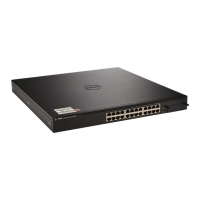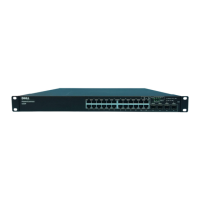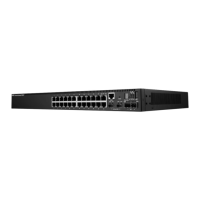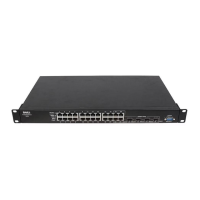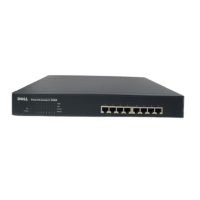Configuring Routing 511
Interface Statistics
Use the OSPF Interface Statistics
page to display statistics for the selected interface. The information is
displayed only if OSPF is enabled.
To display the page, click Routing
→
OSPF
→
Interface Statistics in the tree view.
Figure 9-10. OSPF Interface Statistics
The OSPF Interface Statistics page contains the following fields:
•
Interface
— Select the interface for which data is to be displayed from the drop-down menu.
•
OSPF Area ID
— The OSPF area to which the selected router interface belongs. An OSPF Area ID is
a 32-bit integer in dotted decimal format that uniquely identifies the area to which the interface
connects.
•
Area Border Router Count
— The total number of area border routers reachable within this area. This
is initially zero, and is calculated in each SPF Pass.
•
AS Border Router Count
— The total number of Autonomous System border routers reachable within
this area. This is initially zero, and is calculated in each SPF Pass.
•
IP Address
— The IP address of the interface.
•
Interface Events
— The number of times the specified OSPF interface has changed its state, or an
error has occurred.
•
Virtual Events
— The number of state changes or errors that have occurred on this virtual link.
•
Neighbor Events
— The number of times this neighbor relationship has changed state, or an error has
occurred.
•
External LSA Count
— The number of external (LS type 5) link-state advertisements in the link-state
database.
•
Sent Packets
— The number of OSPF packets transmitted on the interface.
•
Received Packets
— The number of valid OSPF packets received on the interface.
•
Discards
— The number of received OSPF packets discarded because of an error in the packet or an
error in processing the packet.
•
Bad Version
— The number of received OSPF packets whose version field in the OSPF header does
not match the version of the OSPF process handling the packet.
•
Source Not On Local Subnet
— The number of received packets discarded because the source IP
address is not within a subnet configured on a local interface.
•
Virtual Link Not Found
— The number of received OSPF packets discarded where the ingress
interface is in a non-backbone area and the OSPF header identifies the packet as belonging to the
backbone, but OSPF does not have a virtual link to the packet's sender.
•
Area Mismatch
— The number of OSPF packets discarded because the area ID in the OSPF header is
not the area ID configured on the ingress interface.
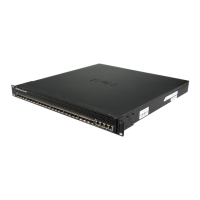
